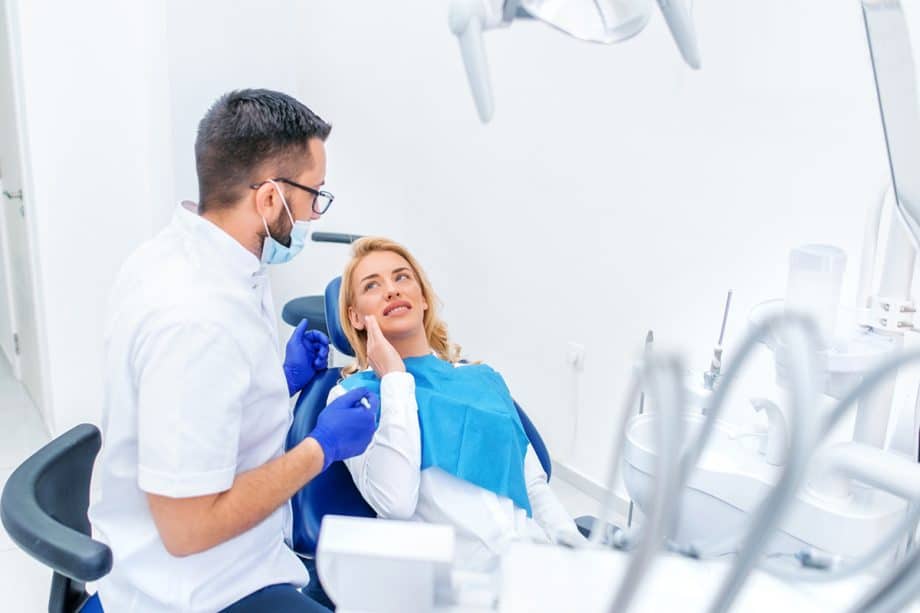It does not matter how well your child cares for their oral health and how often you keep up with routine appointments — dental emergencies can happen.
As a parent, knowing what to do when a serious dental concern arises is so important. It can even mean the difference between saving a tooth and losing it. The key, of course, is to be able to determine whether or not you are dealing with an actual dental emergency.
Common Dental Emergencies
Believe it or not, certain instances may feel like a dental emergency but can actually be treated at home until your child can see their dentist. Others are time-sensitive and require immediate attention.
For the most part, you can consider a dental emergency as one that causes severe pain, bleeding that will not stop, or a tooth that has been knocked out completely.
A Knocked Out Tooth
A tooth that has been knocked out needs to be addressed right away to save the tooth. If this should happen, the key is to find the missing tooth, being careful not to touch the root. Gently rinse it with water. If possible, place the tooth back in the socket and have your child hold it in place by biting down easily on a piece of gauze. Or, place the tooth in saliva or milk. Then, contact your child’s dentist immediately.
It is important to note that this is only necessary for permanent teeth. If your child gets a baby tooth knocked out, it cannot be saved. All you should do is make an appointment to be seen.
Severe Toothache or Pain
Tooth pain can happen for many different reasons, including cavities and even getting food caught under the gum line or between the teeth. It is important to take a look at the area where your child is complaining of pain. Try flossing and getting under the gumline, as well as look for signs of decay or infection.
Always contact your child’s dentist to discuss the situation and determine ways to either treat at home or take your child in to get relief.
Bleeding
Sometimes there are instances when pediatric dental emergencies include bleeding. Cuts to the cheek, lips, tongue, or gum can result from things like falls, accidents, biting oneself, and so forth. Most often the bleeding is temporary and quickly eases up until it stops.
If your child has uncontrolled bleeding due to such an injury, contact your dentist right away.
Other Dental Emergencies
There are so many different situations that can trigger an emergency when it comes to your child’s oral health — including both dental health and orthodontic treatment issues, such as:
- Chipped or broken tooth
- Mild to moderate toothaches
- Tooth Sensitivity
- Broken or loose orthodontic appliance
- Soreness
- Out-of-place wire or broken ligature
If you aren’t sure what to do, contacting your pediatric dentist or orthodontist is always a good idea. This team of professionals will guide you on what your next steps should be.
Is Your Child Dealing with a Dental Emergency?
If you believe your child has a dental emergency and needs to get seen right away, our team at Suffolk Pediatric Dentistry & Orthodontics has a plan in place. We understand that these situations can feel scary and complicated. That’s why we have instructions to help you get through some of the most common dental emergencies on our website and provide instructions when you reach out to us after hours.
Simply give us a call. We are here for you.
If your child has a serious or life-threatening emergency, call 911 or go to your nearest emergency room.
Frequently Asked Questions
Are cavities in baby teeth treated?
Yes, a cavity in a baby tooth is treated. This will not only reduce the risk of pain and discomfort, but it also reduces the chance of infection — and the spread of decay.
Are braces painful?
Traditional braces can cause a bit of discomfort and may lead to small cuts or scrapes inside the cheek until your child gets used to the hardware being in the mouth.
How quickly does a knocked-out tooth need to be treated?
A tooth placed back in the socket or placed in a cup of milk or saliva has about an hour to be treated by a dentist. As time passes, the chance of it surviving begins to decline.

